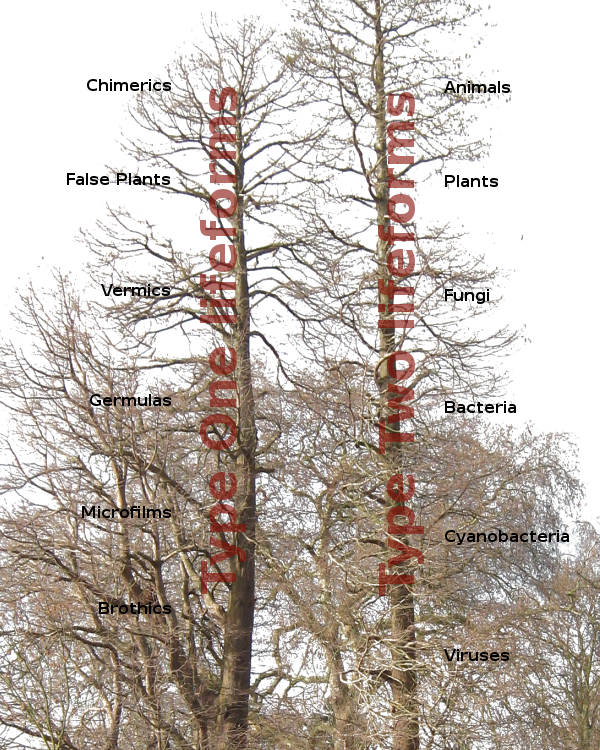Living Kalieda
Kalieda is a living planet, with a diverse array of lifeforms present in every ecological niche so far discovered. Life is even beginning to conquer the new ice cap in the north, which formed after the Disaster. As far as we know, life is unique to Kalieda (though some Societies, particularly the Istran Society, would dispute this claim).
The purpose of this section of the Encyclopaedia is to introduce some of the basic facts about life on our planet, for instance exploring why all lifeforms fall into two fundamental Life Types, and highlighting a handful of representative lifeforms found on our continent, Ewlah
The Kaliedan Life Types
Kalieda is home to two fundamentally diffrerent types of life. This difference is most apparent at the biochemical level. As yet, science has not yet explained why there are two separate biological systems on our planet, rather than just one, or more than two. All Societies, however, both extant and extinguished, have developed stories to explain the fundamental dichotomy between Type One lifeforms (T1, also known as First Creation, Cursed or Feral life) and Type Two lifeforms (T2, called Second Creation, Blessed or Nurtured life), of which humanity is a part.
| Biochemical component | Type One life | Type Two life |
|---|---|---|
| Amino acid stereoscopicity | different processes require differently shaped amino acids, but there is no particular bias overall between D-form and L-form shapes | almost all amino acids are L-form and are unable to utilise their mirror image D-form acids |
| Amino acids | 23 types of molecule, 7 found only in T1 organisms | 20 types of molecule, 4 of them unique to T2 organisms |
| Lipids | Uses both phosphate and arsenic in the formation of lipid membranes and structures | Relies on phosphate only; arsenic is lethal to almost all T2 organisms |
| Nucleic acids | There are small, but significant, differences in both the structure and operation of DNA between T1 and T2 life, though the nucleic acids are common to both | |
| Proteins | Proteins that carry out essentially the same tasks in T1 and T2 lifeforms have no common factors and appear to have arisen independently of each other, for instance the proteins that construct (pseudo-)haemoglobin | |
| Enzymes and other control molecules | There appear to be some superficial similarities, but these break down under closer inspection - for instance the role of ethanol as a signalling mechanism in T1 and T2 lifeforms | |
The Trees of Life

Scientists currently recognise six kingdoms within each of the two lifetypes. However, these kingdoms are not analagous to one another - for instance, viruses appear to be unique to Type Two lifeforms. The kingdoms for each lifetype are:
- In the Type One life tree - chimerics, false plants, vermics, germulas, microfilms and brothics
- In the Type Two life tree - animals, plants, fungi, bacteria, cyanobacteria and viruses
Over 95 per cent of all Kaliedan life is Type One life, with less than 5 percent being Type Two. However, because humanity is a Type Two lifeform, and our survival is entirely dependent on the combined success of all Type Two life, Type One lifeforms are much less well studied and understood.